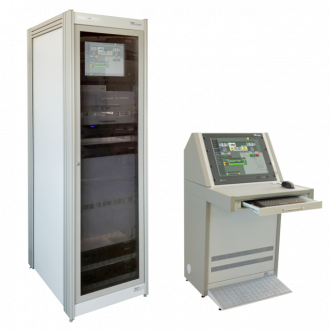AMS MAX
Application
- large airports of the category II. and III. according to ICAO
Files for download
pdf Certificate MO AČR (580 KB)
pdf Certificate LÚ SR (395 KB)
pdf Certificate SSGA (3.12 MB)
Description/Properties
- well arranged control with use of push-buttons on touch-screen, or by trackball
- well arranged representation of information in several screens on one monitor
- central unit situated in the rack KS-AMS
- hot standby reserve of controlling computer
- 1024 mutually inter-changeable working sites, which all of them operate as workstations
- communication between working sites with use of the network LAN Ethernet (100 Base-T) up to the distance of 100 m, or with use of WAN modems up to the distance of 3-15 km (depending on quality of the line)
- remote control and monitoring of maximum 1024 airfield ground lighting systems in three, five or seven degrees of luminous intensity
- data transfer line for control and monitoring uses only one pair in communication cable
- control and monitoring up to the distance of 10 km
- remote servicing supervision
System possibilities
- control and monitoring of several landing runways (RWY, THR, TDZ, CL)
- control and monitoring of several guidance systems (ALS) and elevated light (PAPI) from both directions
- control and monitoring of several taxiways (TWY)
- control and monitoring of stop bars, extended axis, etc.
- control and monitoring of flashes
- direct connection to constant current regulators TCR.2 (Transcon)
- connection of regulators made by other manufacturers with use of the rack SU-24B.RT with I/O modules RT-24
- monitoring and control of large power systems with use of units PS-02, SU-24B.RT, or with use of communication lines RS-232, RS-422, RS-485 and modems
- watching of objects and fire alarm
- connection of meteorological system and representation of its data on the monitor
- automatic setting of airfield ground lighting systems' luminous intensity depending on runway visual range (RVR)
- time synchronization with use of the GPS system
- monitoring of radio-navigation equipment (ILS, DME, NDB, VOR)
- acoustic signalling of failure states; voice output in language of the user
- archiving of operational and failure states
- in case of utilization of constant current regulators TCR.2 there is a possibility of long-term monitoring of the cables' insulation state with use of well arranged diagrams
- working sites embedded into the table TWS-01 or stand-alone working sites






